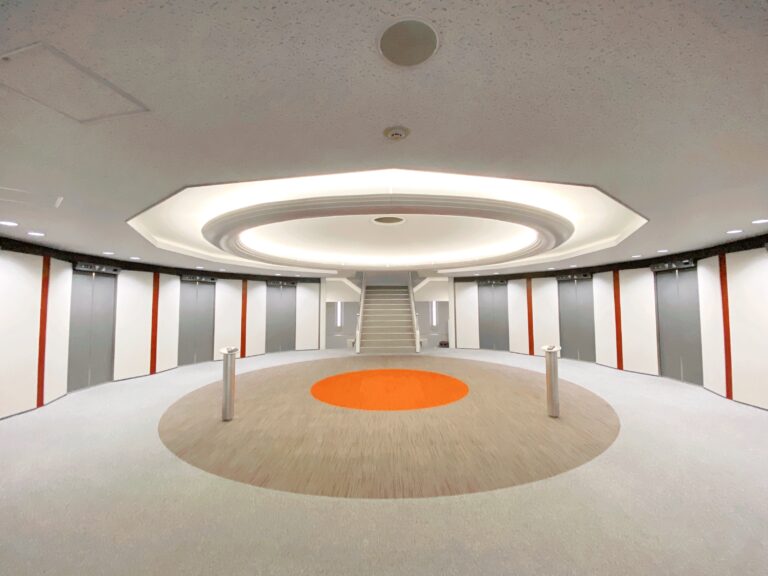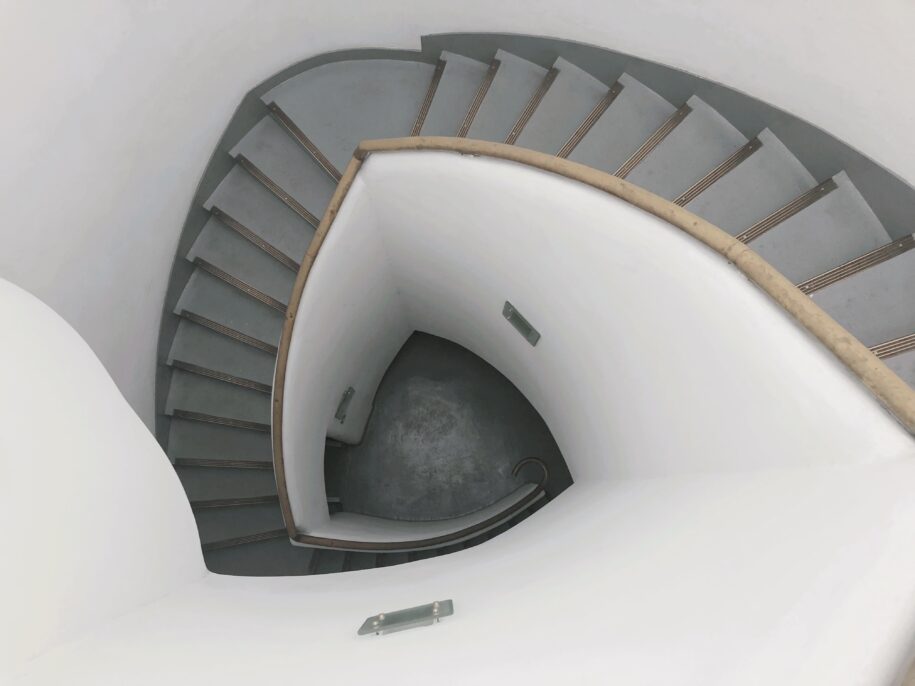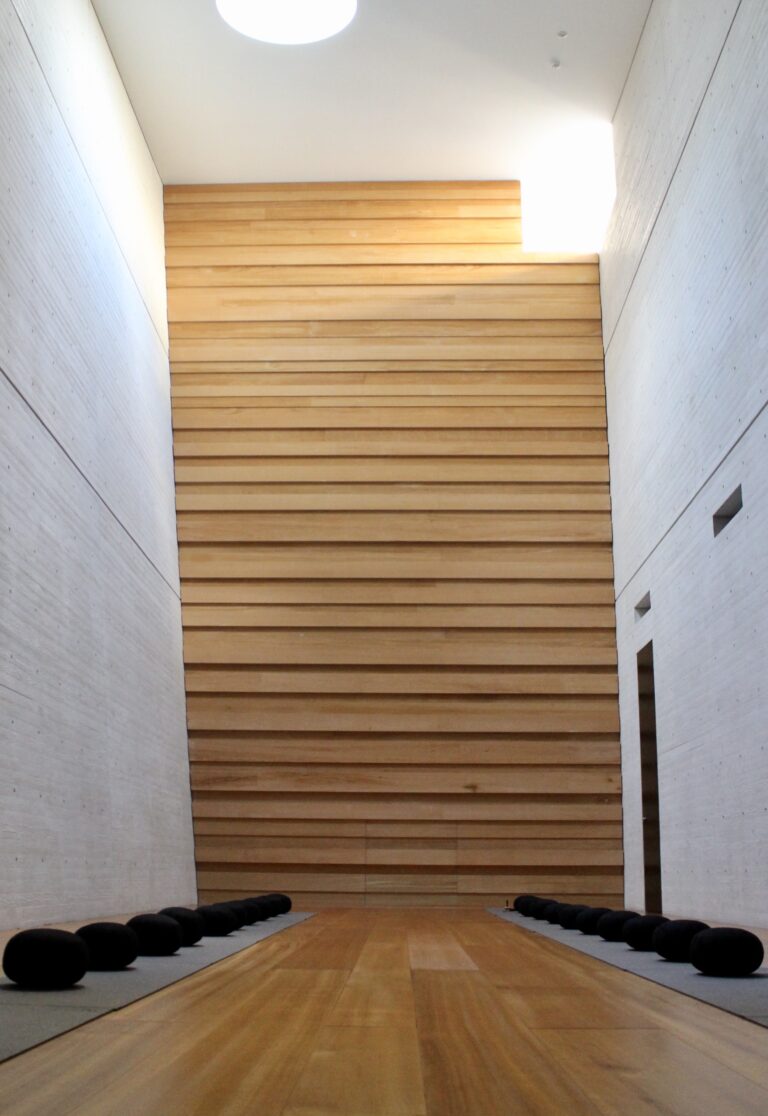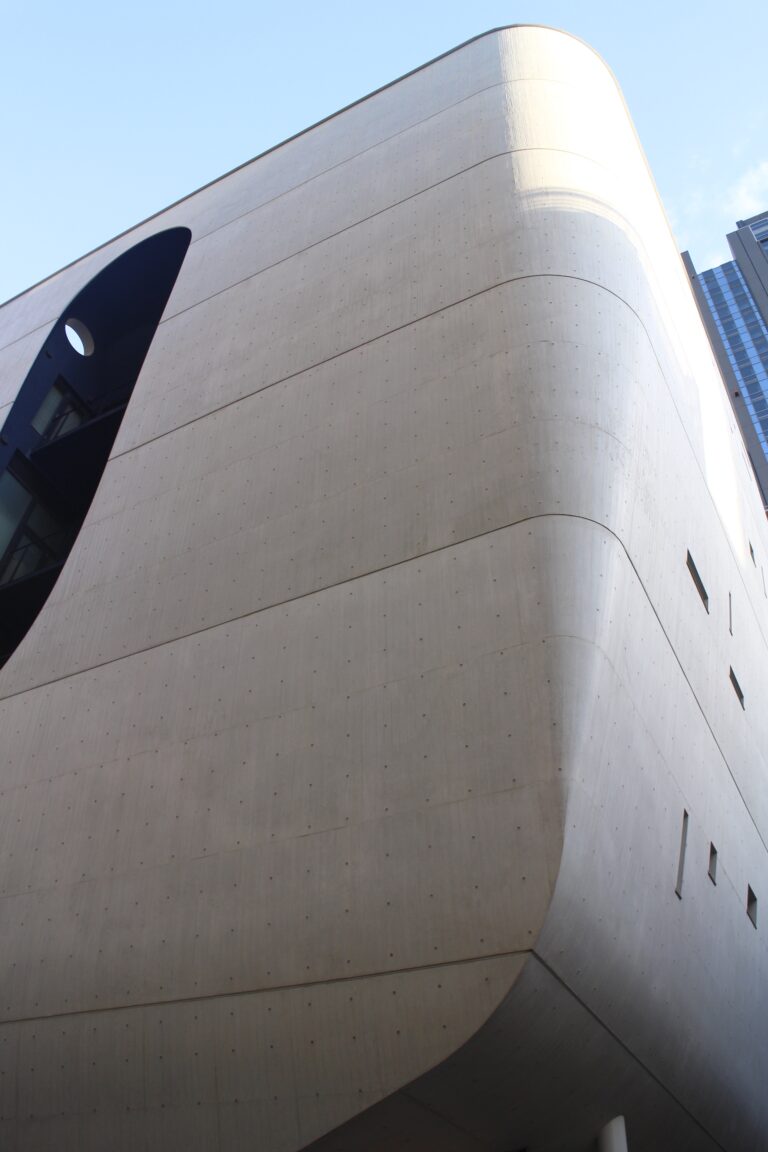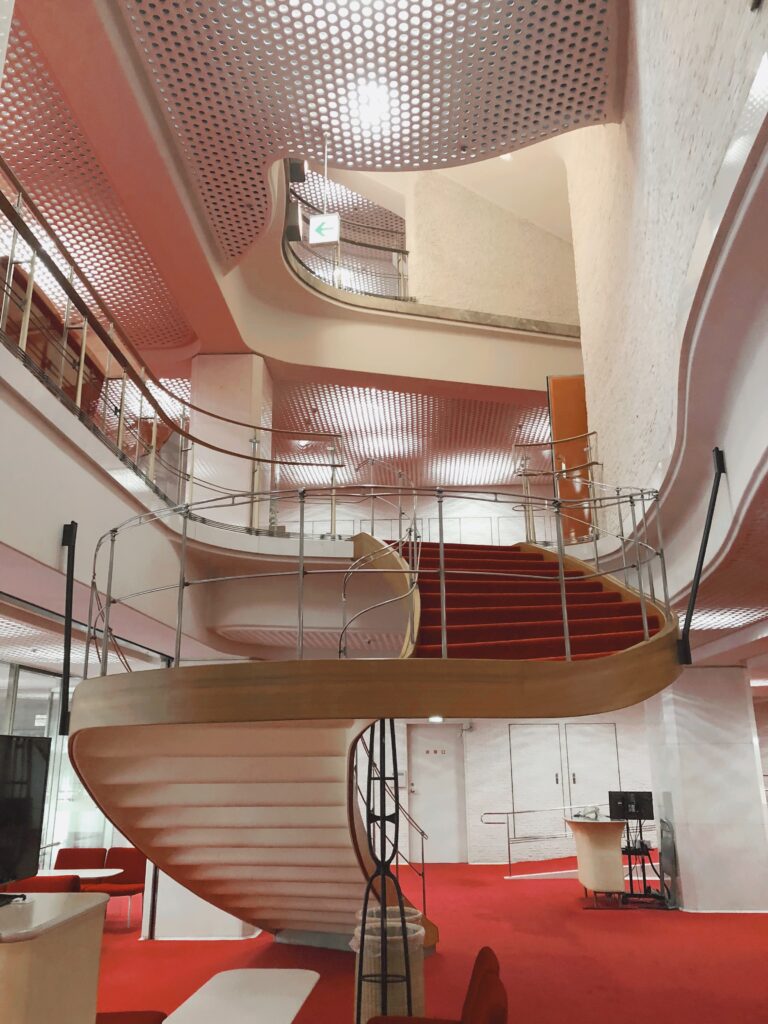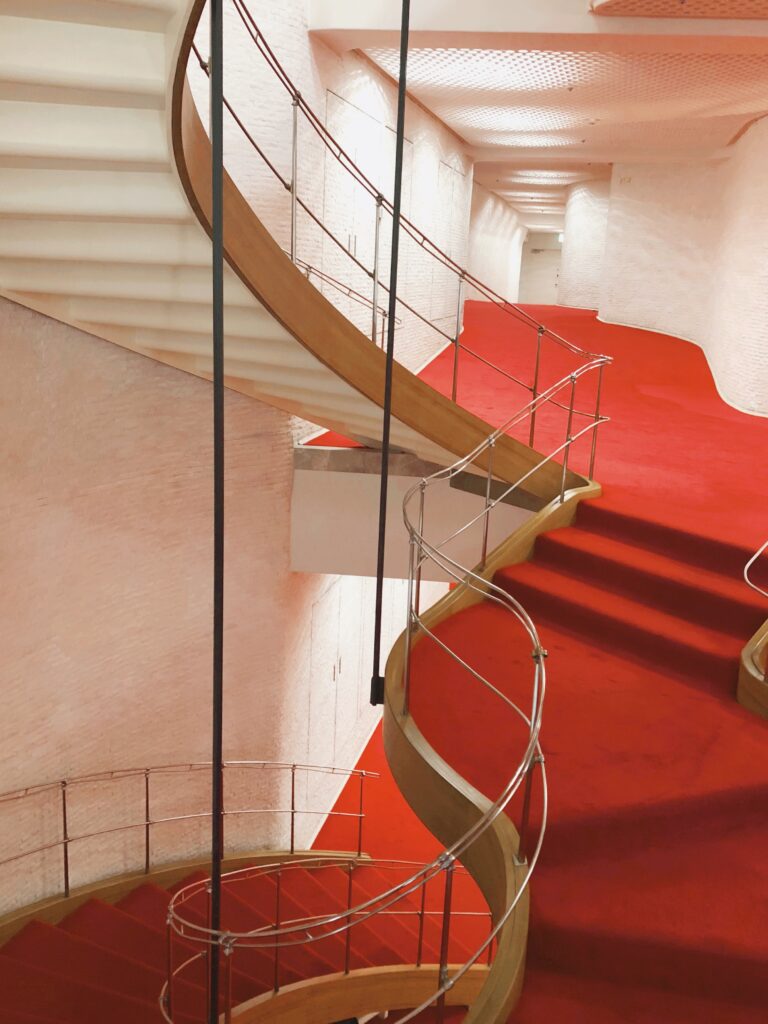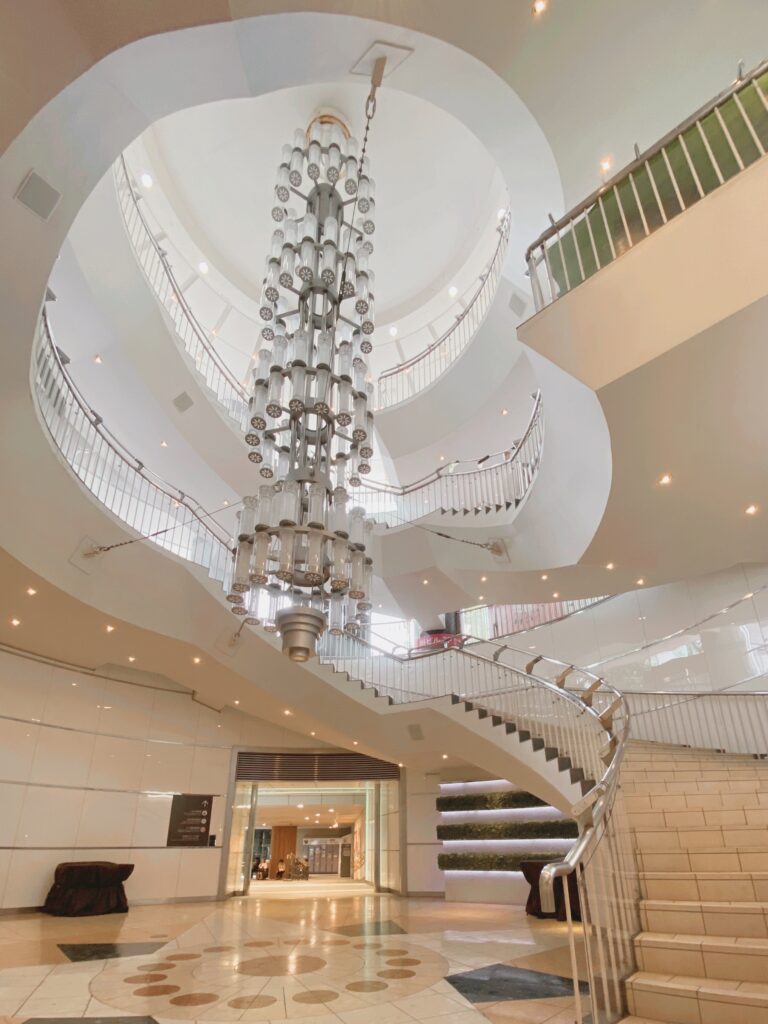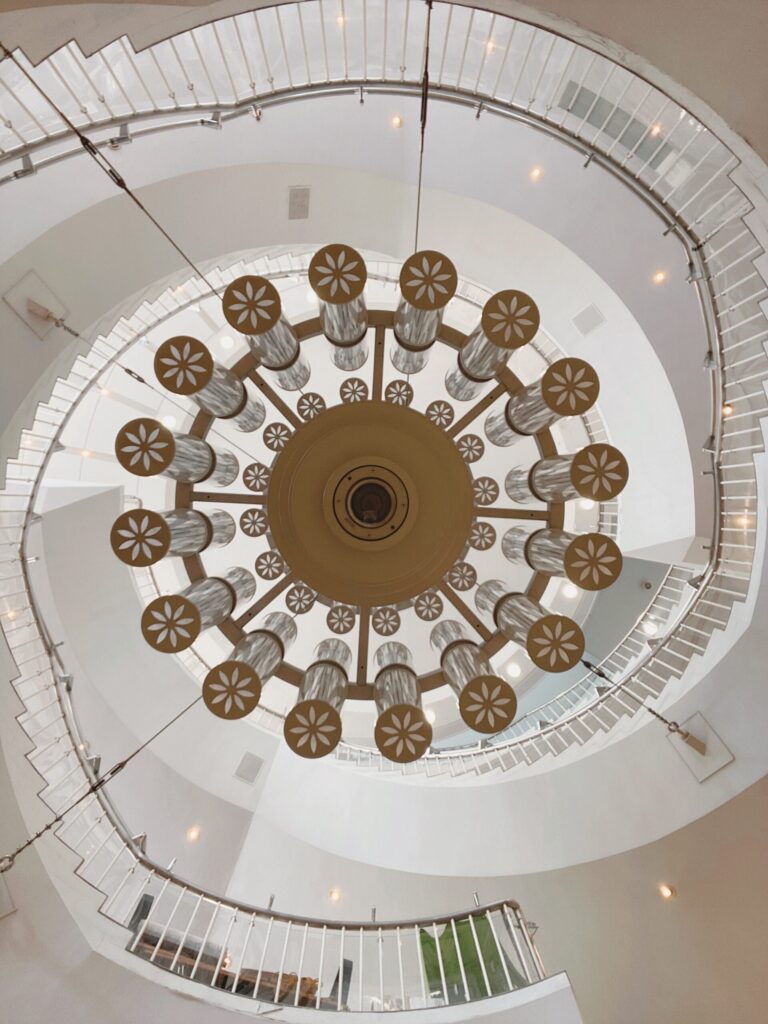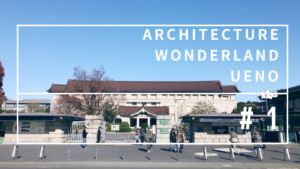Stairs are fun because they are hidden.
There are many architectural works with beautiful exteriors, and it is always exciting to find out that their interiors are also beautiful and beyond our imagination.
As an ardent fan and a photographer of staircases, let me introduce some of my staircase collections in central Tokyo!
You will not be able to find these unless you bravely step inside the buildings.
If you are looking for something more than just having a look around well-known works, here is a list of perfect places for you to visit.
Information on each building is attached for your navigation. Enjoy your “staircase” walk in Tokyo.
Shinjuku Ruriko-in Byakurenge-do (Kiyoshi Sey Takeyama + Amorphe)
Institut Français du Japon – Tokyo (Junzo Sakakura)
Abercrombie & Fitch Ginza Chuo Dori (MHS architects)
Tokyo Bunka Kaikan (Kunio Maekawa)
Nissei Theater (Togo Murano)
Kotsu Kaikan (Mitsubishi Jisho Sekkei)
Palaceside Building (Shoji Hayashi)
Shinjuku Ruriko-in Byakurenge-do
2014 Kiyoshi Sey Takeyama + Amorphe
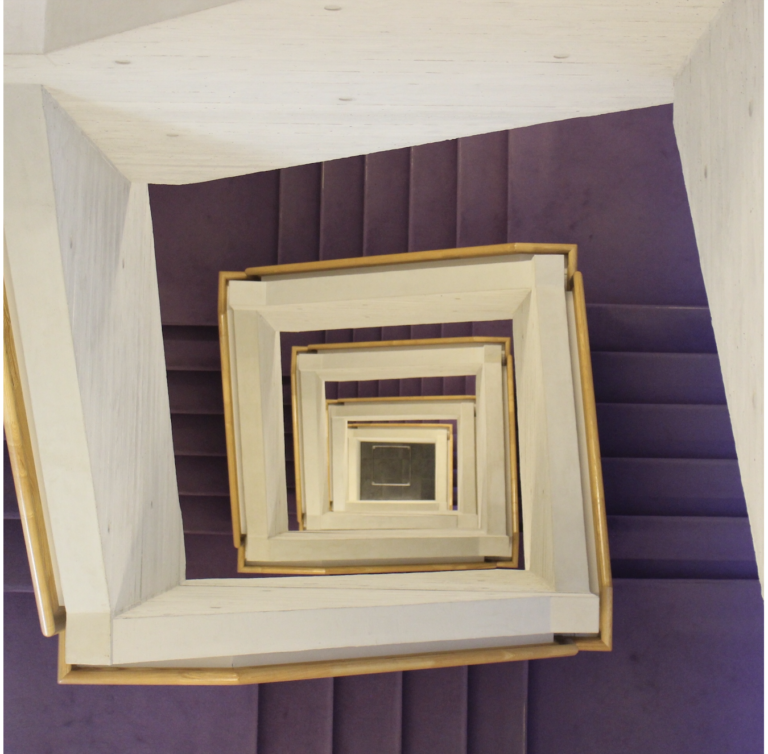
Shinjuku station is known as the busiest station used by 3.5 million people a day (as of 2018).
Byakurendo is a Buddhist temple located a 3-minute walk from this station.
A rounded and unfamiliar design suddenly appears in a hotel district between cramped buildings.
It is far from what you usually imagine as a Buddhist temple.
I hear that the exterior design came from the image of a white lotus flower blooming in the Buddhist Paradise.
Since it is built on limited land space, the structure extends vertically. You will find the meditation room with a very high ceiling and a stairwell.
The purple carpet and the concrete with a cedar grain pattern make a wonderful contrast.
In Japanese Buddhism, purple is often considered to be the color worn by the highest-ranking monks. The subdued colors match the Buddhist temple very well.
Tips when visiting:
Stop by the reception first. You can get a direction from the staff and an English brochure.When they have a memorial service, you may not be able to visit some floors. Advance reservation is recommended.
Their website is only in Japanese, so better ask someone who understands Japanese or a hotel concierge to call for you.
Shinjuku Rurikoin Byakurendo
Institut Français du Japon – Tokyo
1951 Junzo Sakakura
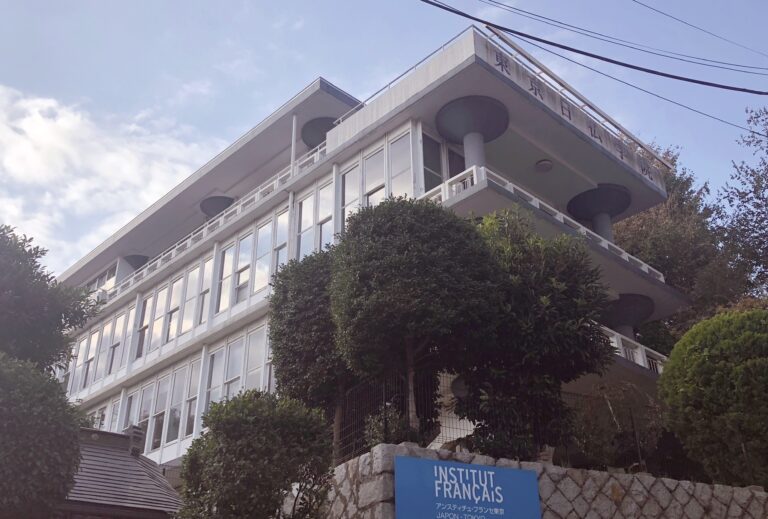
The official agency of the French government, which holds French language courses and cultural events.
Designed by Junzo Sakakura, the Japanese architect who studied under Le Corbusier in France.
Sakakura’s works inherit Le Corbusier’s sophisticated modernist architecture.
The Kamakura Cultural Center in Kanagawa Prefecture is one of his works.
Since this is a facility open to the public, many architecture lovers visit here.
The stairs in the picture are not in the main building but in the tower located near the building entrance. The gentle triangular curves and playful details are eye-catching. There is a double spiral staircase inside the tower (there is another staircase under the other staircase).
I hear that one staircase was for students and the other was leading to the principal’s office.
The elegant color scheme and calm space almost make you feel as if you were in a monastery or in a seashell in French Riviera.
How wonderful it would be to learn French in this environment!
In addition to this beauty in the 1950s, Sou Fujimoto’s “Village as Institute” was newly added to the complex in July 2021. While being aware of the concept of “architectural promenade” by Le Corbusier, he intends to adopt the ideas of the French terrace and the Japanese porch to create a new experience in the existing building.
Tips when visiting:
After the completion of the new building, the main building is currently closed for renovation work. The spiral staircase will not be visible until its reopening is scheduled in the spring of 2022.
Institut Français du Japon – Tokyo
Abercrombie & Fitch Ginza Chuo Dori
2009 MHS architects
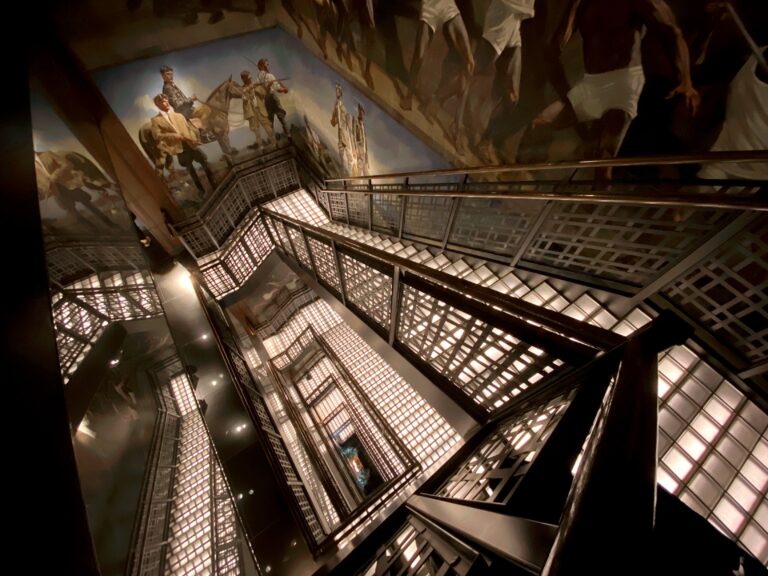
A famous apparel shop with dim light, loud BGM, and sweet teenage days scent.
The store floors are on the 1st to 11th floors, with low-tone lighting and a simple color scheme. Its color temperature creates a unique atmosphere, making the stairs with lighting even more fun to walk on.
The stairwell has a mural of 820 square meters, which is one of the largest in the world. Interesting space design.Abercrombie & Fitch in Ginza is designed by MHS a long-established design firm. They also designed 50 year-old “New Shimbashi Building” in Shinbashi district where many happily drunk Salary-man gather after work. The retro facade design is incredible and highly recommend visiting inside for the time-traveling experience.
Tips when visiting
You can visit the shop at any time during their business hours.
Abercrombie & Fitch Ginza Chuo Dori
Tokyo Bunka Kaikan
1961 Kunio Maekawa
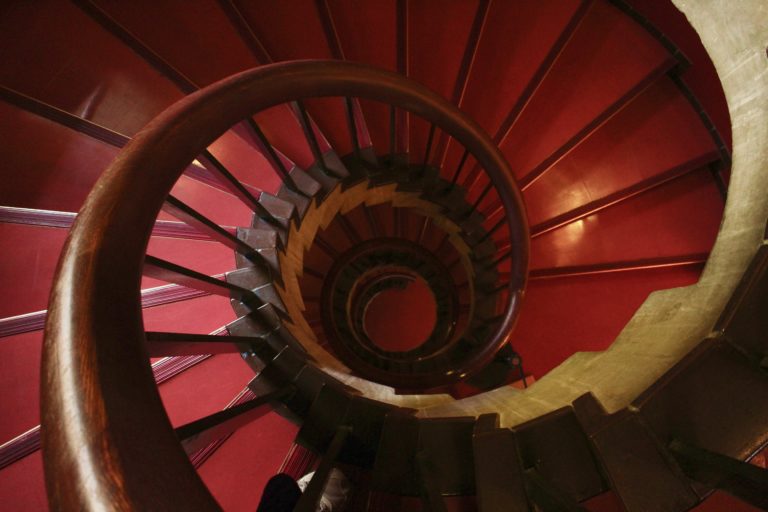
Ueno Park is a relaxing place for Tokyoites, famous for a number of National museums condensed in one place. Tokyo Bunka Kaikan is a music hall that is located here as one of its cultural facilities.
There are mesmerizing spiral stairs with primary color that gives a strong impact hidden next to the elevator. Architect Maekawa also studied under Le Corbusier, but his work has a more profound impression than Junzo Sakakura’s Institut français. It probably came from a sense of responsibility for building Japan’s first full-scale opera hall in Tokyo. The more I look at these spiral stairs, the more it feels like I am drawn into this beautiful swirl. It is perfect from every angle.
Kanagawa Prefectural Music hall in Yokohama is also designed by Maekawa. Its scale is smaller but it has a stunning wooden wall.
Tips when visiting
You can visit the hall at any time when it is open. (free)
Don’t forget to enjoy the Western Art Museum by Le Corbusier (closed until the spring of 2022), which stands in front of the Tokyo Bunka Kaikan too.
Tokyo Bunka Kaikan
Nissei Theater
1963 Togo Murano
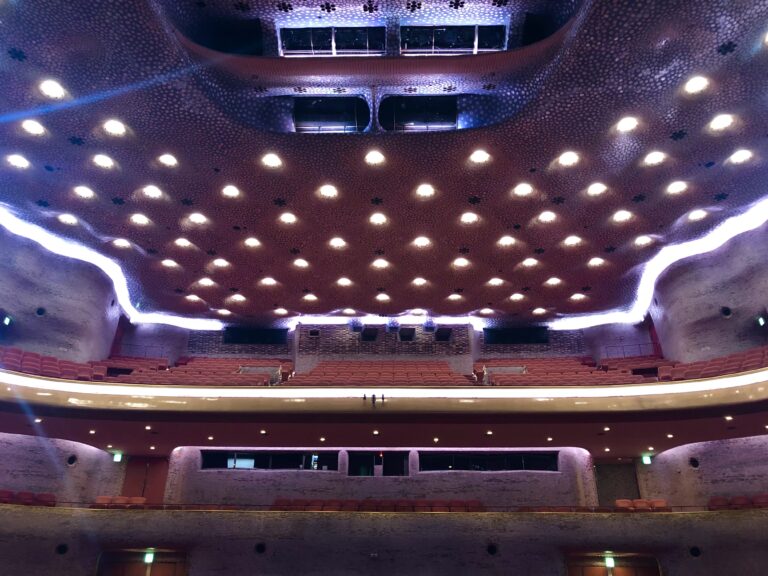
Going through the entrance, you will be greeted by a high ceiling with a geometric design, ceiling, marble, mosaic and stairs with red carpet.
The building itself is rather simple-looking, probably because half of the building is occupied by a major insurance company.
The main hall looks like a mermaid castle under the sea. I felt that the theater is literary alive, and could even feel the coldness of the water.
There are no straight lines, all curvy and wavy, and the pearls on the ceiling are in mysterious pink color.
Anyway, let’s pay attention to the stairs. This sensual thin handles with elegant curves create extraordinary enjoyment.
Murano was quite good at creating a luxurious atmosphere, as he had done many luxurious interiors of cruise ships in his younger days. It is said that this spiral staircase is designed considering the difference of stride between males and females.
A gentleman standing on the outer side of the step escorts a lady in an evening dress standing on the inner side of the step. It’s a design that makes a couple in formal outfit look beautiful.
Murano was 72 years old when he designed this theater.
He was a late-boomer and he became highly reputed after this project. He created many masterpieces all over Japan.
He was a hard-working architect until the day he passed away at the age of 90.
Tips when visiting
As of September 2021, the tour in the tour is suspended for the Covid-19 pandemic.
Advance reservations are required for the tour.
Nissei Theater
Tokyo Kotsu Kaikan
1963 Mitsubishi Jisho Sekkei.Inc
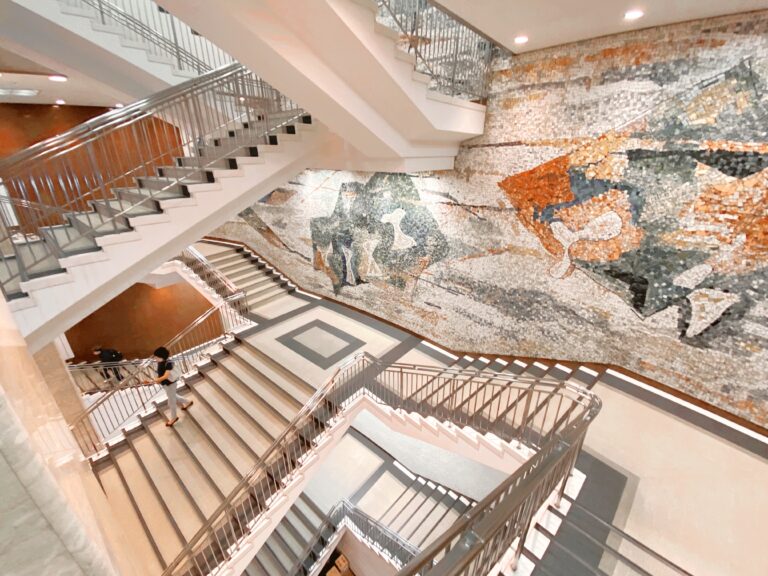
One of the easy-to-miss buildings standing in front of Yurakucho station, a gateway to posh shopping area Ginza. There is a farmer’s markets on the front porch of the building, and shoeshiners busily shining businessman’s shoes at the entrance. It is always busy with people shopping and looking for books at Sanseido book store.
This building itself is very adorable (check out the ceiling lights and random mirrors on the walls when you stop by) , and there are two stunning stairs inside the building.
One is the stairwell with a mosaic tile wall. It is so 60s. Dynamic, well crafted, and warm.
Another one is a spiral stair with a chandelier, which not many people pay attention to even though it is at the very entrance of the building. I love looking at the retro flower motif from below. It is even lit up at night.
Tips when visiting
Anyone can drop in freely during business hours.
10seconds walk from JR Yurakucho station central gate.
At the terrace on the 3rd floor, you can enjoy the bullet trains passing by in front of you!
Palaceside Building
1966 Shoji Hayashi
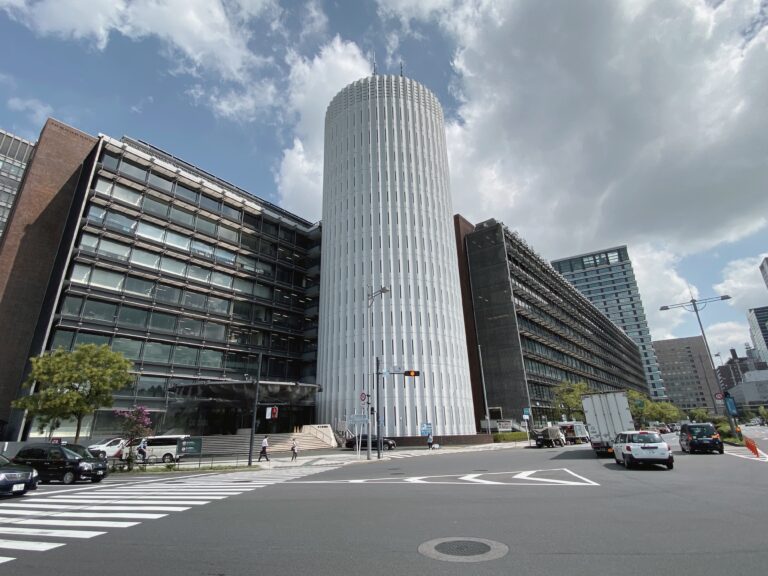
Just a stone’s throw from the Imperial Palace full of greens, this prominent-looking building stands.
It is an office building, of which the main tenant is a newspaper company.
And there are small businesses such as travel agency, pharmacy, dentist, flower shop, and café. It’s like a little city inside the building.
What amazes me here is that I can definitely feel the 60s vibe from its retro interior design, and at the same time find it somewhat futuristic.
The central stairs are incredible indeed.
Made of stainless-steel handrail and mesh as side support, this staircase itself is a structure. For there are no support posts under it, it looks like floating stairs made of clouds guiding me up to the sky. Full of technique with a sense of fantasy.
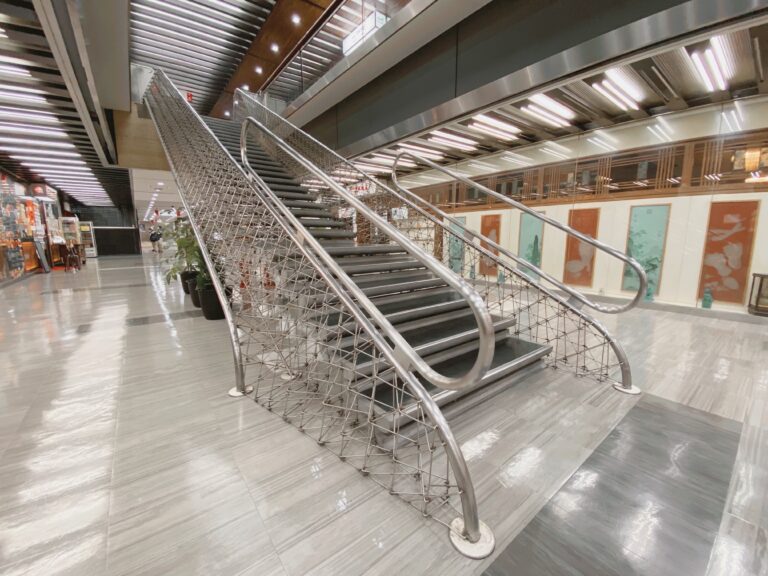
Other than the stairs, the design of handrails, holes on the wall, and the elevator hall are stunningly cool. (On top of the pole looking like a bollard in the park, you will find elevator buttons!)
